Battle of Hastings: King Harold death marker moved
- Published
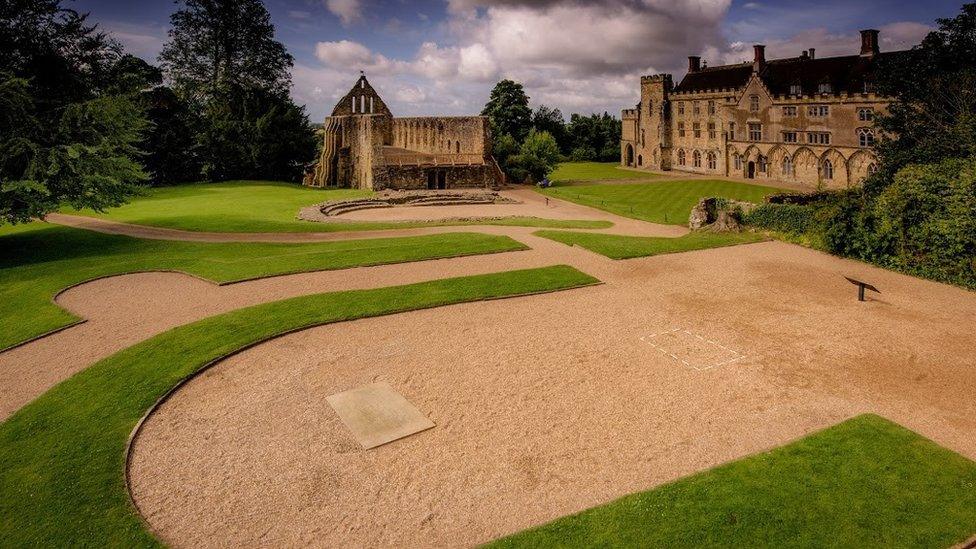
The new location of the memorial stone to Harold is 6m from the previous site shown with white dashes
A stone marking the site of King Harold's death at the Battle of Hastings has been moved to mark the 950th anniversary of his demise - to a spot about 20 ft (6m) away.
The marker at Battle Abbey had denoted the "official" location of the last Anglo-Saxon monarch's death, since the 1980s.
But, a new study of the grounds show an area slightly to the east was where Harold fell, English Heritage said.
Some historians dispute their account.
Battle Abbey was founded by William the Conqueror on the site of 1066 battlefield, according to English Heritage.
Historical accounts have claimed the abbey church, which was demolished in the 16th Century, had an altar where Harold fell.
But, a new study of its layout showed the original was further east than first thought, English Heritage said.

Battle Abbey was founded by William the Conqueror on the site of the battlefield, English Heritage says, although others disagree
Roy Porter, from English Heritage, said: "Working out the position of that altar was key and since the 19th century, our understanding of the layout of the church has improved dramatically."
Author Nick Austin, who has previously advanced the theory that King Harold was defeated by William the Conqueror two miles away in Crowhurst, said he "totally disagreed" with moving the stone.
"The foundations haven't moved and the church hasn't moved," he said.
"New analysis of the Chronicle of Battle Abbey proves beyond doubt that the abbey was not the original battlefield.
The site of the battle has been much-debated, with Mr Austin not the only historian to reject English Heritage's version of events.
In December 2013, Channel 4's Time Team programme claimed Harold fell on the site of what is now a mini roundabout on the A2100.
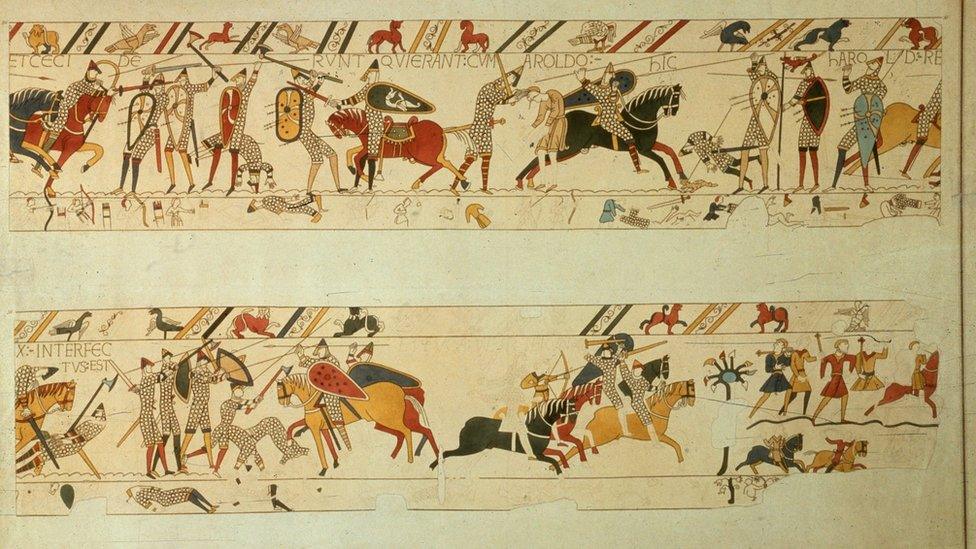
The Bayeux Tapestry depicts the Battle of Hastings and the death of King Harold
- Published14 October 2013
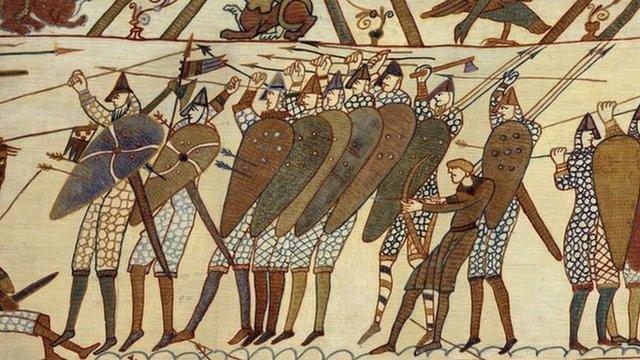
- Published24 February 2013
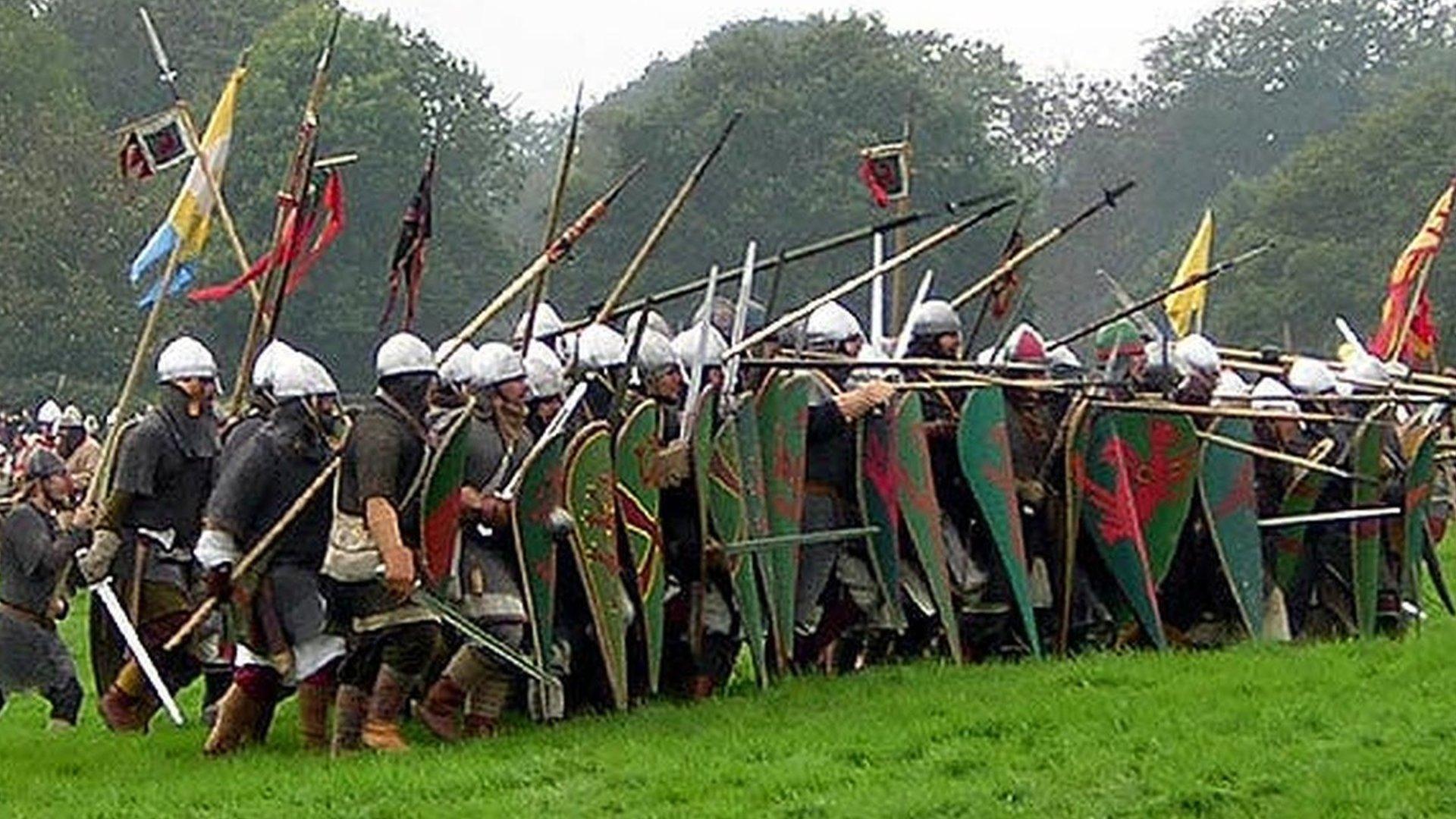
- Published30 September 2012

- Published17 October 2011
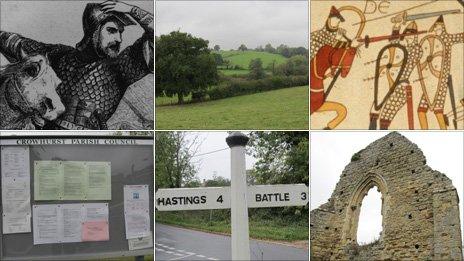
- Published24 March 2011